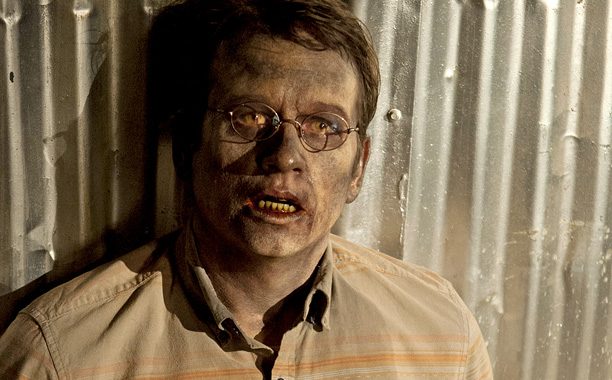“The rich have got their channels in the bedrooms of the poor,” observed Leonard Cohen once upon a time, but there was no video streaming back then nor such a complex understanding of the workings of compulsive behavior. Today’s serialized TV, regardless of what size screen you’re watching it on, isn’t interested in diverting you but on hooking you, on making you, not just the video, go viral. You are the receiver of the content, but you’re also the messenger. And while that’s always been true, it’s never been more true. It’s a science–it’s a narcotic. We’re not talking about CBS trying to get viewers to tune into the Mary Tyler Moore Show once a week at an appointed time. We’re talking about narratives that have to defeat time shifting, the long tail of zillions of other options and the game-changing effect of a decentralized media.
Of course, these creations are an inexact science and the idea of a “scheme” being used to push our buttons and make us consume in bulk can be overstated, but the seemingly endless access we have to content is something new and worth analyzing. I guess this is the most interesting question for me: If the programs are really good, does it mitigate somewhat attempts to program us? From an Andrew Romano article in Newsweek about the age of binge viewing:
“So far, no scientist has studied binge watching per se, or the Hyperserial generation of television programming that has inspired so much of it. But the groundbreaking work of a Princeton University psychologist named Uri Hasson may hint at why the current trend toward narrative precision may also be triggering an increase in viewer engagement.
Hasson, a bald, bespectacled professor with a thick Israeli accent, doesn’t binge watch any television shows himself. ‘That is for people without work the next morning—or children,’ he quips. But Hasson may understand better than anyone else why the rest of us can’t help ourselves. In 2008 he coined the term ‘neurocinematics’—the neurobiological study of how films interact with the brain—to describe his work. A study published that year in Projections (subtitle:The Journal for Movies and Mind) was particularly revelatory. Employing fMRI technology, Hasson and his neuroscience colleagues screened four film clips—from Sergio Leone’s The Good, the Bad and the Ugly, Alfred Hitchcock’s ‘Bang! You’re Dead,’ Larry David’s Curb Your Enthusiasm, and an unedited, single-camera shot of New York’s Washington Square Park—and then watched as viewers’ brains reacted. Their goal? To measure the degree to which different people would respond the same way to what they were seeing.
The results varied widely, depending on which film was shown. The unstructured, ‘realistic’ video from Washington Square Park, for instance, elicited the same neurological reaction in only about 5 percent of viewers. Responses to Curb Your Enthusiasm were slightly more correlated, at roughly 18 percent; and The Good, the Bad and the Ugly ranked even higher, 45 percent. But ultimately, Hitchcock was the runaway ‘favorite’: a full 65 percent of the study’s cerebral cortices lit up the same way in response to the clip from ‘Bang! You’re Dead.’
Hasson’s conclusion was fascinating: the more ‘controlling’ the director—the more structured the film—the more attentive the audience. ‘In real life, you’re watching in the park, a concert on Sunday morning,’ Hasson tells me. ‘But in a movie, a director is controlling where you are looking. Hitchcock is the master of this. He will control everything: what you think, what you expect, where you are looking, what you are feeling. And you can see this in the brain. For the director who is controlling nothing, the level of variability is very clear because each person is looking at something different. For Hitchcock, the opposite is true: viewers tend to be all tuned in together.’
Is it possible, then, that the recent trend toward more structured, page-turning narratives on television might be generating ever-higher levels of cerebral correlation—and viewer engagement—in living rooms across the country?
‘Absolutely,’ Hasson says.”
_______________________
“It’s like daylight already. How did that happen?”

